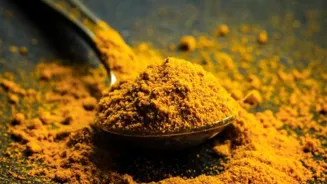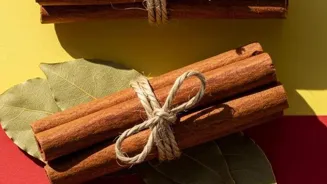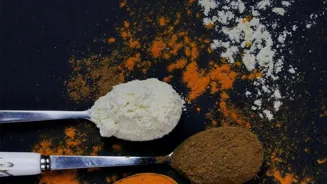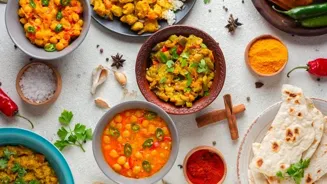Unlock the Secrets of Delicious Indian Curries with Minimal Ingredients! Explore the art of creating flavorful curries easily
In the vibrant tapestry of Indian cuisine, curries hold a special place. They
are the heart and soul of many meals, offering a symphony of flavors that tantalize the taste buds. But what if you thought creating these amazing dishes required a pantry full of exotic spices and hours in the kitchen?
Fear not! You can whip up delicious and authentic Indian curries with surprisingly few ingredients. The key is understanding the foundational elements and techniques that bring the magic to life. Let's explore how to unlock the secrets of simple yet flavorful Indian curries.
Master Indian curry basics: onions, tomatoes, ginger, garlic, key spices
Mastering the basics is crucial. The essential building blocks of most Indian curries include onions, tomatoes, ginger, garlic, and a few key spices. Onions form the base, providing sweetness and depth. Tomatoes contribute acidity and richness to the gravy.
Ginger and garlic add warmth and aromatic complexity which is crucial in a curry. You can avoid other spices. The most important thing is to understand the nature of basic ingredients. Use the key spices in a correct proportion to get desired result.
You can always use a simple approach and choose the right type of the ingrdients to make a simple curry at home.
Select fresh ingredients for flavorful dishes
Choosing the right ingredients is important. Opt for fresh ones that can bring more flavor to food. You can get the best flavors when you pick the right ingredients. The taste of the food depdns on the ingredients that you pick. One should be careful in finding the right ingredients for the recipe.
This is the thing that can give the chef the chance to make everything delicious. Everytime, pick fresh ingredients, even if it costs high. This will bring the best flavor.
Key spices for homemade curry: turmeric, cumin, coriander, chili powder
Now, let's delve into what spices are most important to make a curry at home. Turmeric is important because of its many good reasons. The golden spice, turmeric, is essential for its vibrant color and anti-inflammatory properties. Cumin adds earthy warmth, enhancing the overall flavor profile.
Coriander brings a subtle citrusy note, balancing the richness of the other spices. Chilli powder provides the desired level of heat. It depends on the person and how much spice they take in. Using these four spices is the simplest way to make a curry at home. One can enjoy it with rice or chapati.
Slow-cooking aromatics for flavor extraction in curry-making
The cooking technique plays a vital role in extracting maximum flavor from minimal ingredients. "Bhunao," the process of slow-cooking and caramelizing the aromatics, is key. Start by heating oil or ghee in a pan and add chopped onions.
Sauté until golden brown, stirring frequently to prevent burning. Add ginger-garlic paste and continue to cook until the raw smell disappears. This step is important as it builds the foundation of the curry's flavor. Next, add chopped tomatoes and cook until they soften and release their juices.
This will thicken the curry base. You can see it turn into a brown type color instead of red.
Cook faster with pressure cooker, enhance flavors with slow cooker
To make the process easier. You can use a pressure cooker or a slow cooker to make this. A pressure cooker can allow a curry to simmer in a shorter time. If you are in a hurry, that would be a good way to deal with the problem of time. A slow cooker is the opposite of the pressure cooker.
You can slow cook to bring out all the flavors in the recipe. The slow cooker will not make the ingredients lose their flavors in the process. One should use a slow cooker to gently make a food item taste better.
Explore simple curry recipes: tomato, potato, chickpea
Now, let's explore some delicious and simple curry recipes you can create with minimal ingredients. A basic tomato curry is a classic. Sauté onions, ginger and garlic until golden brown. Add chopped tomatoes and cook until soft. Add turmeric, cumin, coriander, and chilli powder.
Simmer until the gravy thickens. This simple recipe can be enjoyed with rice or roti. Potato curry is also a simple way to make one. Sauté onions, ginger & garlic, then add potatoes, tomato, and spices. Simmer until potatoes are cooked to perfection. This is another simple way to make a food.
Chickpea curry is also a good option. Sauté onions, ginger and garlic as usual. Add the chickpea, tomato, and spices. Simmer until the chickpea is nicely cooked.
Experiment with various vegetables for delicious, healthy curries
Experimenting with different vegetables is a great way to expand these simple curries. Add spinach or fenugreek leaves for a nutritious boost. Replace potatoes with cauliflower for a low-carb option. Try adding mushrooms for an earthy flavor.
You can also add paneer (Indian cheese) for a creamy texture. The possibilities are endless, and the key is to adapt these recipes to your taste preferences and available ingredients.
With a little creativity, you can create a variety of delicious and healthy curries without requiring a huge list of ingredients. You can add spice as much as you want or as little. You can also make it very runny to add with foods. Indian curries are very versatile.
Enjoy the process of making delicious Indian curries
Remember, the most important thing is to enjoy the process and don't be afraid to experiment. Each time you make a curry, you'll learn something new and refine your skills.
With minimal ingredients and a little practice, you can create authentic and delicious Indian curries that will impress your family and friends. You might want to keep a document or a notepad to know what recipe you are making.
It would be helpful if you forget or you need something to reference to.
Adding fresh herbs enhances curry taste and aroma
The taste of a curry depends on what is added to the curry. This applies to adding additional herbs. Additional herbs add an extra layer of fragrance to the curry. Some of the basic herbs that Indians use are coriander leaves, curry leaves, mint, and basil.
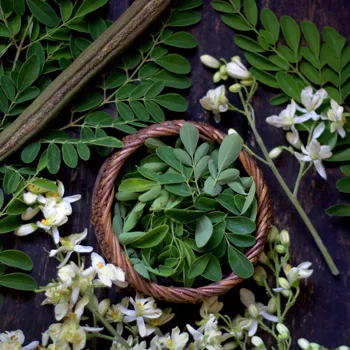
With the addition of herbs to a curry, it will provide a better aesthetic look and an additional fragrance when serving the food. Make sure that the herbs used are fresh, there must be no dry leaves, remove any dried leaves. Fresh herbs are a must for the taste of a particular curry.
Master basic techniques for authentic Indian curries with simple ingredients
In conclusion, creating delicious Indian curries doesn't require a pantry full of exotic ingredients or years of culinary experience.
By mastering the basic techniques, using quality simple ingredients, and experimenting with different flavors, you can whip up authentic and flavorful curries that will transport you to the heart of India. So, embrace the simplicity, unlock the flavor, and start cooking!
Always remember to add some spices and herbs in the cuisine to make it more better. If possible, you can always ask your elders to give you insights too.
AI Generated Content. Glance/InMobi shall have no liability for the content



